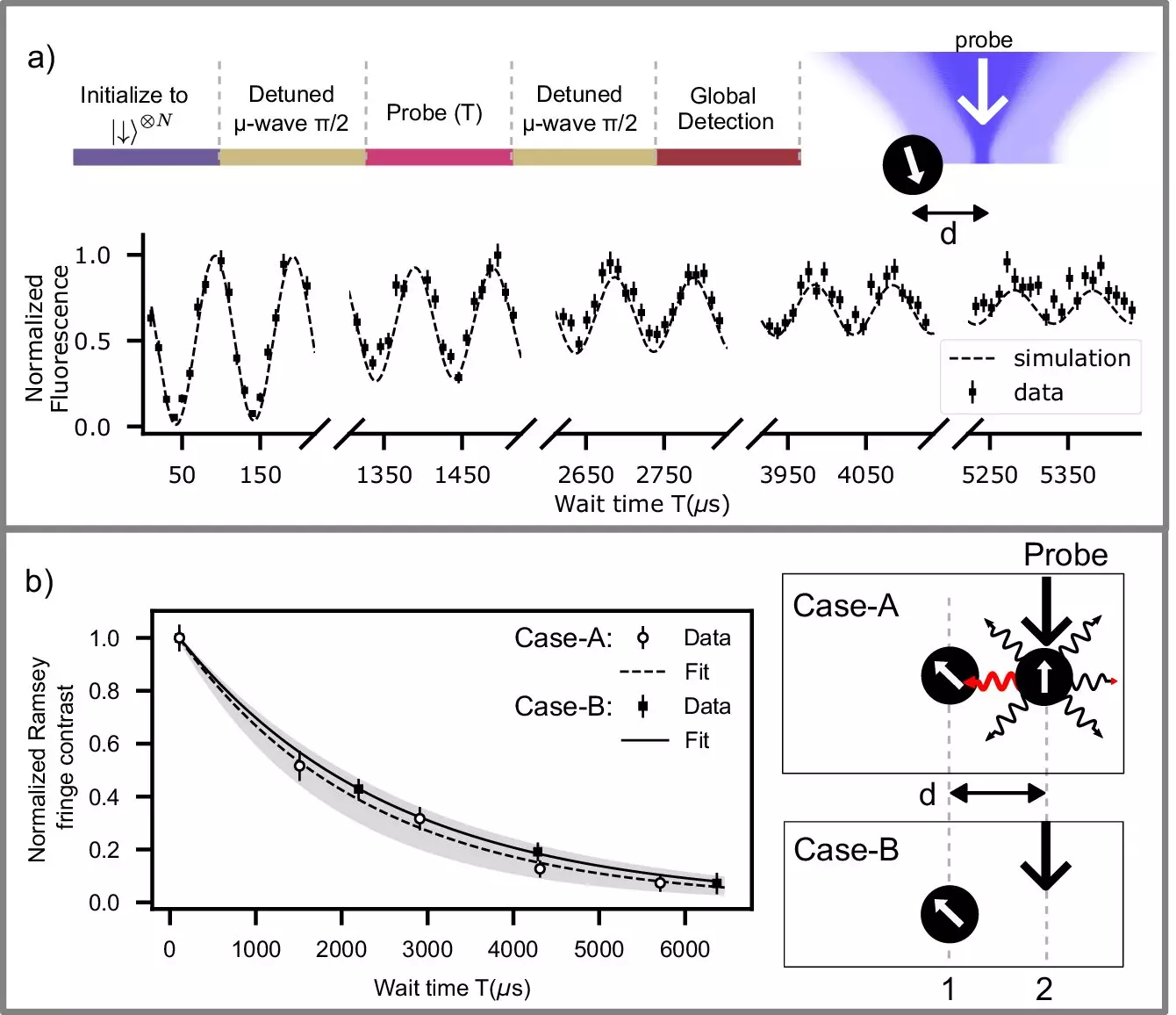Quantum information technology is poised at the forefront of modern scientific endeavors, yet it presents unique challenges—chief among them, the complexity of safeguarding fragile qubits during experimentation. As quantum processors and error correction protocols become increasingly pertinent, the capacity to measure and reset qubits without corrupting neighboring ones becomes essential. A remarkable advancement has emerged from the University of Waterloo, where researchers have successfully demonstrated the potential for precise measurement and resetting of qubits in a densely packed environment, a feat which holds major implications for the future of quantum computing.
At the heart of quantum computation lies the qubit, the fundamental unit of qubit data, akin to a classical bit. However, qubits are notoriously sensitive to external disturbances. The nuanced challenge of manipulations and measurements presents a double-edged sword—while researchers strive to advance the intricacies of quantum operations, the risk of inadvertently collapsing a qubit’s state stands as a major barrier. In particular, protocols for quantum error correction rely on the ability to accurately measure states without destroying vital information contained in adjacent qubits. As quantum systems are scaled up, resolving this challenge has become increasingly critical.
Traditional methodologies to preserve qubit coherence often come at a significant cost—lengthening coherence time, requiring excess qubits, and increasing the risk of errors. Researchers have employed various strategies, including separating qubits to reduce interaction, yet these solutions introduce delays and complexities to experiments. The work conducted by Rajibul Islam and his team indicates a transformative shift in this paradigm, as they explored a more sophisticated method to achieve precision without sacrificing efficacy.
The researchers at the Institute for Quantum Computing (IQC) implemented an innovative approach by leveraging holographic beam shaping technology within the confines of trapped ion qubits. Historically, the proximity of qubits—sometimes merely micrometers apart—has posed significant risks, as laser measurements aimed at one qubit can inadvertently scatter photons and disturb others, jeopardizing their states. In an impressive demonstration, the researchers were able to measure and reset a specific qubit while maintaining the integrity of nearby qubits, a feat previously deemed nearly impossible.
Through meticulous control of the laser light employed during the measurement process, the research team successfully managed to engage in “mid-circuit” measurements without the need to physically relocate other qubits. This innovative strategy allowed them to maintain over 99.9% fidelity in preserving the state of the qubit while conducting operations on neighboring targets. Their work, published in the prestigious journal Nature Communications, represents a new frontier in the realm of quantum information science.
The crux of this breakthrough lies in the ability to apply targeted laser beams while simultaneously suppressing interference from surrounding qubits. By concentrating on destructive qubit manipulation, the researchers honed in on how quantum states could remain protected through advanced light control. The successful preservation of qubit states depended heavily on minimizing crosstalk, which occurs when measurement efforts inadvertently affect nearby qubits.
The findings challenge conventional wisdom that separated qubit locations are necessary to ensure measurement integrity. As explained by lead researcher Rajibul Islam, this study encourages a reevaluation of entrenched views about the impossibility of simultaneous qubit measurements, positing instead that the precise control of light intensity can mitigate external interferences effectively.
The implications of this advancement are manifold. The ability to conduct mid-circuit measurements without degrading qubit states positions researchers to enhance the capabilities of quantum processors. This could lead to improved quantum simulations and more robust error correction methods, crucial for scaling quantum technology applications.
Furthermore, this work opens the door for future innovations in both hardware and software optimizations geared toward quantum computation. By advancing the methods of qubit manipulation and measurement, researchers can explore more complex quantum architectures. Enhancing the fidelity of these processes will be essential for implementing unique error-correcting codes necessary for maintaining quantum information integrity.
The University of Waterloo’s breakthrough signifies a pivotal moment in quantum research, highlighting the importance of innovation in tackling long-standing challenges in qubit measurement. This work not only reinforces the potential of quantum information technology but also addresses the core issues that must be resolved for practical and widespread applications in the field. The landscape of quantum computing continues to evolve, with this recent advancement poised to spark further research, collaboration, and discovery.


Leave a Reply